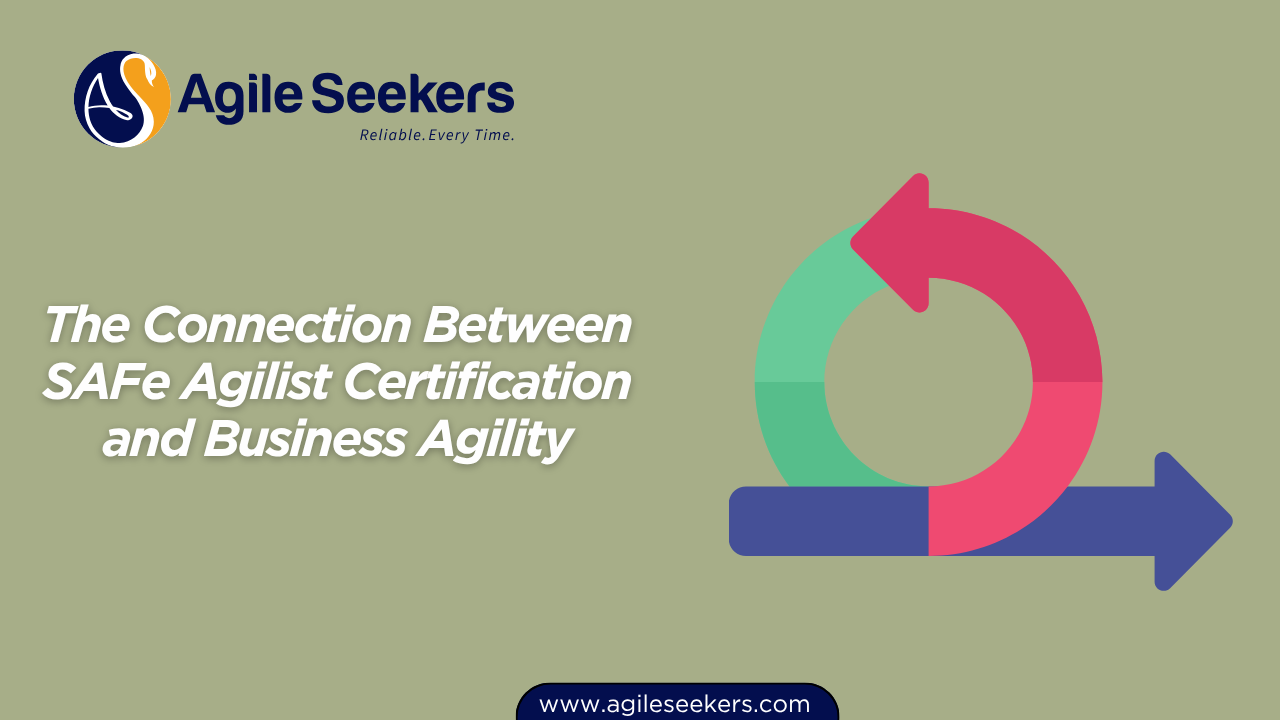The Connection Between SAFe Agilist Certification and Business Agility

Many organizations talk about agility, but very few manage to achieve it at scale. Business agility isn’t just about faster delivery; it’s about an enterprise’s ability to sense change, adapt strategy, and respond with speed and resilience. The SAFe Agilist certification is designed to equip leaders and change agents with the mindset, tools, and practices needed to make that shift possible.
Let’s break down how this certification connects directly to the idea of business agility.
Understanding Business Agility
Business agility is the ability of an organization to compete and thrive in a constantly changing environment. It’s the capacity to quickly shift strategies, reallocate funding, reorganize teams, and deliver innovation at speed — all while keeping customer value at the center.
At its core, business agility requires three things:
-
Adaptive strategy and funding instead of rigid plans
-
Decentralized decision-making so teams closest to the work can respond quickly
-
Continuous learning and improvement built into the culture
Without these, agility becomes surface-level — limited to teams — and doesn’t touch the wider enterprise. That’s where the SAFe Agilist role comes in.
What the SAFe Agilist Certification Covers
The SAFe Agilist certification, earned through the Leading SAFe program, builds a strong foundation in scaling agility across an organization. Participants learn:
-
The lean-agile mindset and principles
-
Value stream thinking and alignment to business strategy
-
Portfolio-level agility and lean budgeting practices
-
How to run Agile Release Trains (ARTs) for predictable delivery
-
The roadmap for implementing SAFe in large enterprises
By covering these areas, the certification prepares professionals not just to manage agile teams, but to drive enterprise-level transformation.
How SAFe Agilist Certification Enables Business Agility
1. A Common Language Across the Enterprise
Agile adoption often fails because executives, managers, and teams don’t share the same understanding of agility. SAFe Agilist training introduces a shared language for concepts like value streams, portfolio vision, PI planning, and lean budgeting. This creates alignment, reduces friction, and makes scaling possible.
2. Linking Strategy and Execution
Business agility depends on ensuring that strategy translates into execution without losing focus. A certified SAFe Agilist learns how to connect high-level portfolio priorities with real work on the ground. This ensures teams deliver value that aligns with business goals, not just tasks in a backlog.
3. Empowering Decentralized Decision-Making
Centralized control slows organizations down. SAFe encourages pushing decisions closer to the teams who have the knowledge and context. Agilists learn to set up guardrails and empower teams, which speeds up response times and allows the organization to adapt quickly to change.
4. Driving the Core Competencies of Agility
SAFe defines competencies like Lean-Agile leadership, Agile product delivery, organizational agility, and continuous learning culture. A SAFe Agilist understands how to foster these across the enterprise, ensuring that agility is not limited to development teams but embraced across functions like HR, finance, and operations.
5. Delivering Value at Speed and Quality
Business agility only works if organizations can reliably deliver value. SAFe introduces mechanisms such as Agile Release Trains, synchronization, cadence, and built-in quality. A certified Agilist can lead these practices, ensuring predictable delivery while adapting to new priorities.
6. Building a Culture of Continuous Learning
Markets shift and customer needs evolve. Business agility requires organizations to learn quickly and adjust. The SAFe Agilist certification trains leaders to encourage retrospectives, innovation cycles, and inspect-and-adapt events, building a culture where learning is continuous.
Benefits for Professionals
Becoming a SAFe Agilist opens doors to leadership roles in transformation programs. Benefits include:
-
Stronger credibility as an agile leader
-
Deeper understanding of lean-agile principles
-
Skills to influence executives and coach teams
-
Better career opportunities in enterprise agility roles
Benefits for Organizations
When employees earn the SAFe Agilist certification and put it into practice, organizations benefit directly:
-
Alignment between executives, portfolio leaders, and teams
-
Faster time-to-market with reduced risk
-
Clear prioritization of investments based on value
-
Higher engagement from empowered teams
-
Ability to shift strategies and funding in response to market changes
These benefits add up to true business agility — where the enterprise is resilient, adaptive, and customer-focused.
How to Get Started
If you’re aiming to build enterprise agility, earning a SAFe Agilist certification is the best place to begin. It’s more than a course; it’s a shift in how leaders and teams think about work, value, and strategy.
Explore the details here: Leading SAFe Agilist Certification Training
Final Thoughts
The connection between SAFe Agilist certification and business agility is direct and powerful. The certification gives individuals the knowledge and authority to drive change, while organizations gain a structured approach to scale agility across portfolios and value streams.
Put simply, business agility requires leaders who can see the big picture, connect strategy to execution, and create the conditions for teams to thrive. The SAFe Agilist certification is a proven pathway to developing those leaders.
Also read - SAFe Agilist Certification Renewal: Cost, Process, and Benefits
Also see - Why SAFe Agilist Certification Is Essential for PI Planning Success




















